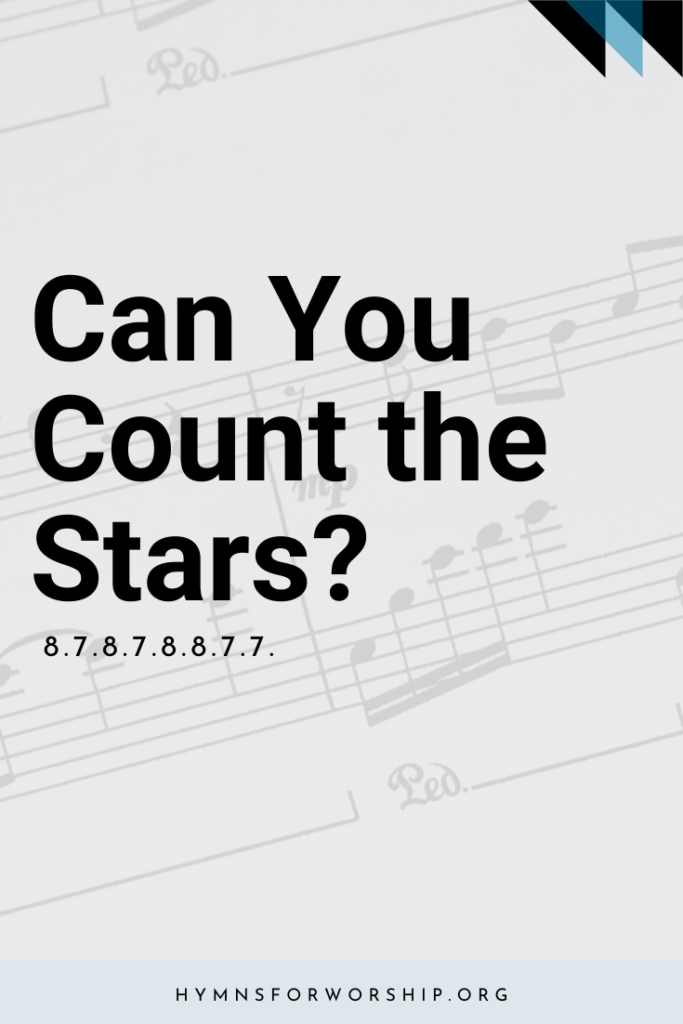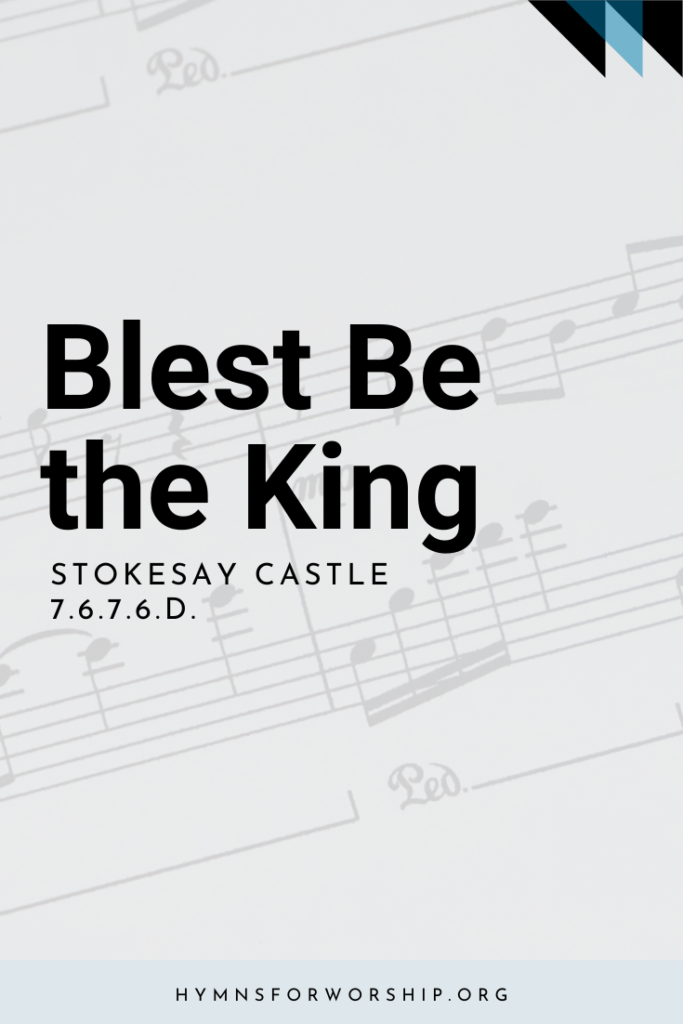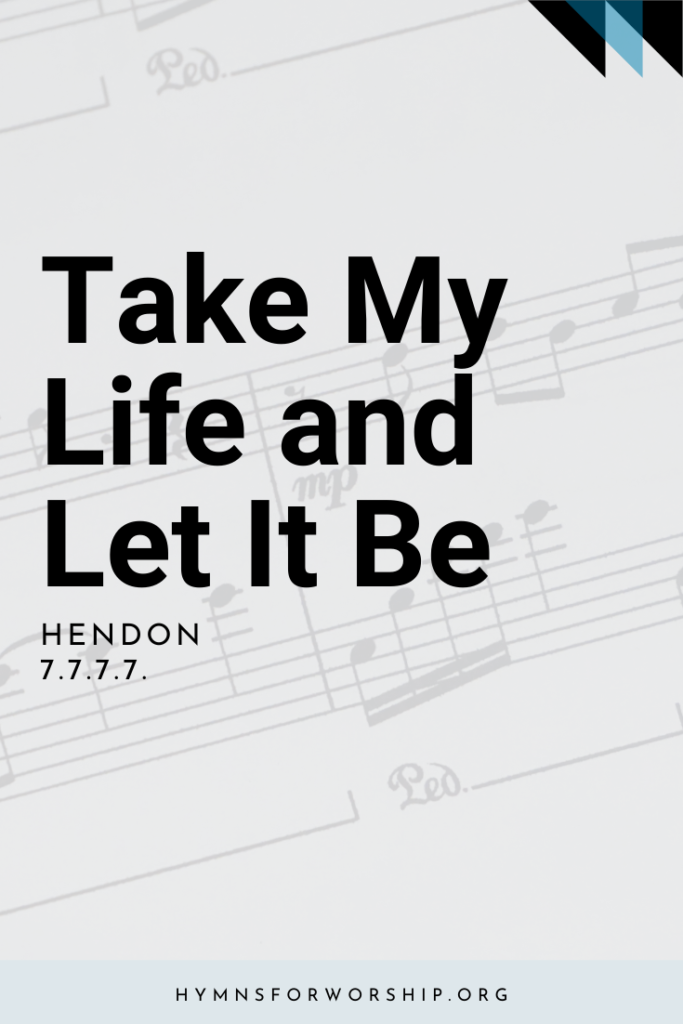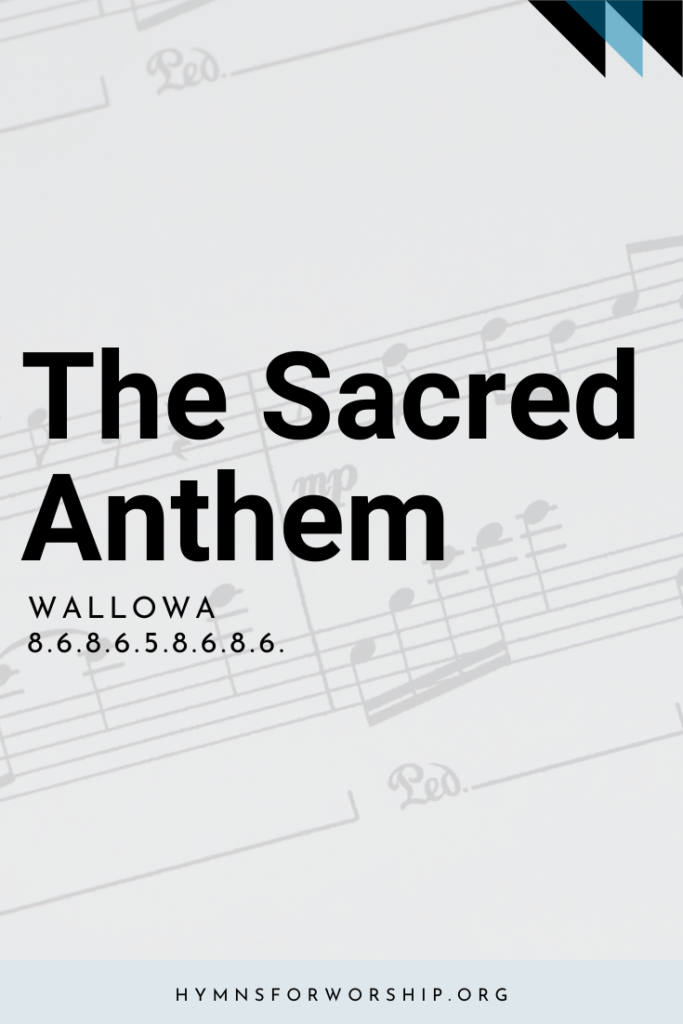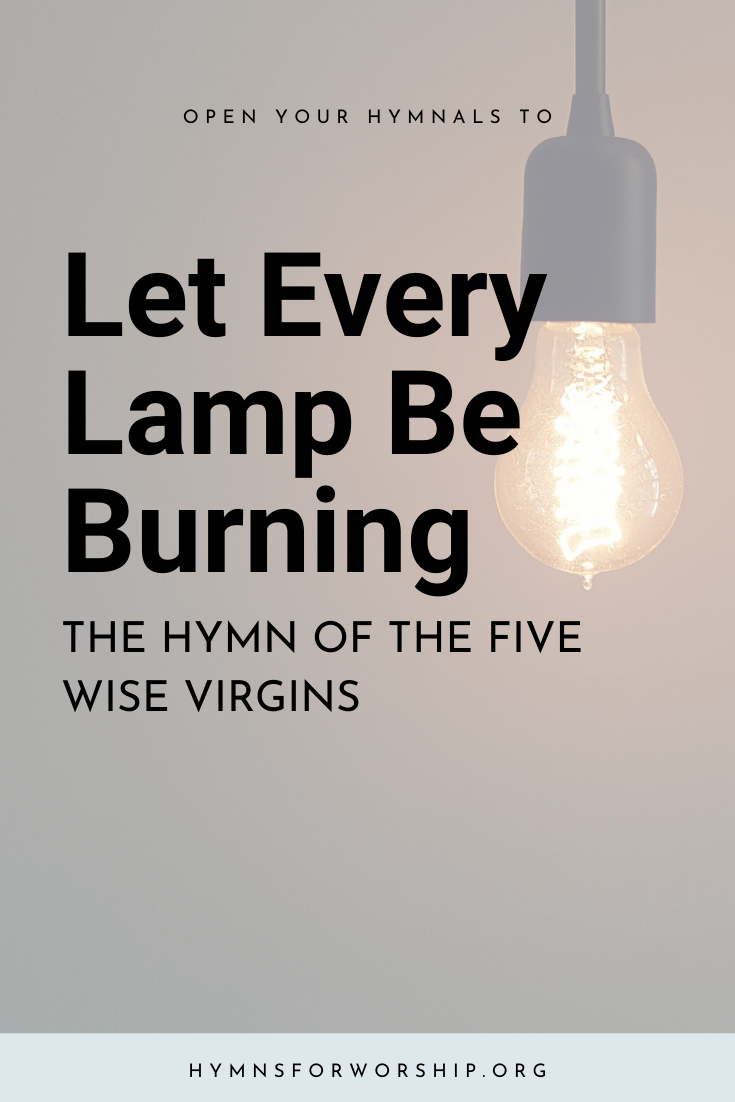
Have you ever come across the ‘Early Advent’ or ‘Watchfulness’ section of the SDA Hymnal, and just leafed through it saying, ‘Hmmm, I don’t know that…, I don’t know that…, I don’t know that…’?
Well, this hymn is one of those least known songs — rarely announced in Sabbath School song service, much less Divine Worship.
Reading through the stanzas, most of its lyrics are straight out of the Scripture passages found in Matthew 25:13. A perfect theme song for a sermon or Bible class on the experience of the ten wise and foolish virgins.
So please, open your hymnal to “Let Every Lamp Be Burning,” SDAH 595.
Christ explains the parable of the ten virgins
As the setting sun paints the Judean hills with crimson shadows, Jesus and His disciples rest on the Mount of Olives. In full view from where they were seated was a house lit up brightly, in expectation of a joyous occasion.
The companies of people waiting around gave evidence that it was indeed a celebration of marriage. And as it is commonly practiced in the East, such festivities commonly happen in the evening.
Looking down, they see a bridal party waiting around a brightly lit home. Jesus smiles at their happy bustle and He thinks of another wedding dear to His heart.
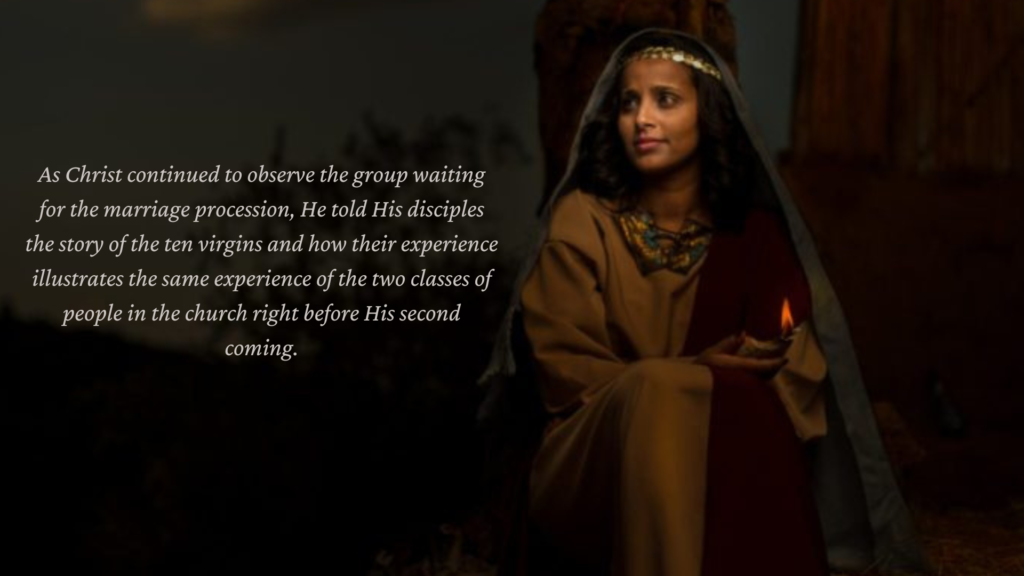
He starts to tell the disciples the story of ten virgins watching for the Bridegroom at dusk. But there is a delay and their weary watch gives way to slumber. They awake to cries of His approach to find their lamps going out, but five had a store of oil. These trimmed their lamps and entered into the wedding while the others were left outside in the darkness.
The two classes of people represented by the ten virgins
As Christ continued to relate the story, He elaborates that the ten virgins illustrates the same experience of the two classes of people in the church right before His second coming.
In the final chapter of the book Christ’s Object Lessons, Ellen White expounds on the meaning of these passages, highlighting the similarities in behavior of these two classes, but an unfavorable ending for some of them:
“In the parable, all the ten virgins went out to meet the bridegroom. All had lamps and vessels for oil. For a time there was seen no difference between them. So with the church that lives just before Christ’s second coming. All have a knowledge of the Scriptures. All have heard the message of Christ’s near approach, and confidently expect His appearing….All have a call, a name, a lamp, and all profess to be doing God’s service. All apparently wait for Christ’s appearing. But five are unready.”
CHRIST OBJECT LESSONS, 408.2
The continuing passages in the chapter highlights the danger in which one may find themselves when they think they may be Christians, but have not fully yielded their hearts to Christ.
Jesus’ earthly day was about to pass into the night of Calvary. With prophetic eyesight, He sees His disciples, the virgins in this story, waiting for His return.
What class are they going to find themselves in when that final day comes?
To join Him, they must keep their lamps trimmed and burning. For God who commanded the light to shine out of darkness hath shined in our hearts to give the light of the knowledge of the glory of God in the face of Jesus Christ. For in Him was life, and that life was the light of men.
The ten virgins’ experience is relative to Adventists
Many Christian religions would take this passage of Scripture at face value, seeing only the importance of being ready for Christ’s soon return.
But the Seventh-day Adventist pioneers have a close and special connection to the experience of the ten virgins, having literally lived the parable for themselves during the Advent movement, especially in the years 1843 and 1844.
Those studying prophecy came to a surprising conclusion — Jesus was coming soon! Daniel 8:14 and prophetic reckoning pointed to October 22, 1844 as the time Jesus would return for His wedding. Known as the Great Advent Movement, this message gained momentum around the world, especially in the northeastern states of America.
People examined every thought and action for hidden sin. Houses were sold and businesses closed as people stopped at nothing to make wrongs right and prepare themselves for Jesus’ return.
Many preached of His coming. Marching to the front before he spoke, James White, a pioneer of the Advent movement, sang the hope of every heart: “You will see your Lord a-coming.” Writes Ellen White, “Our voices were in those days clear and powerful…. Many were in tears.”
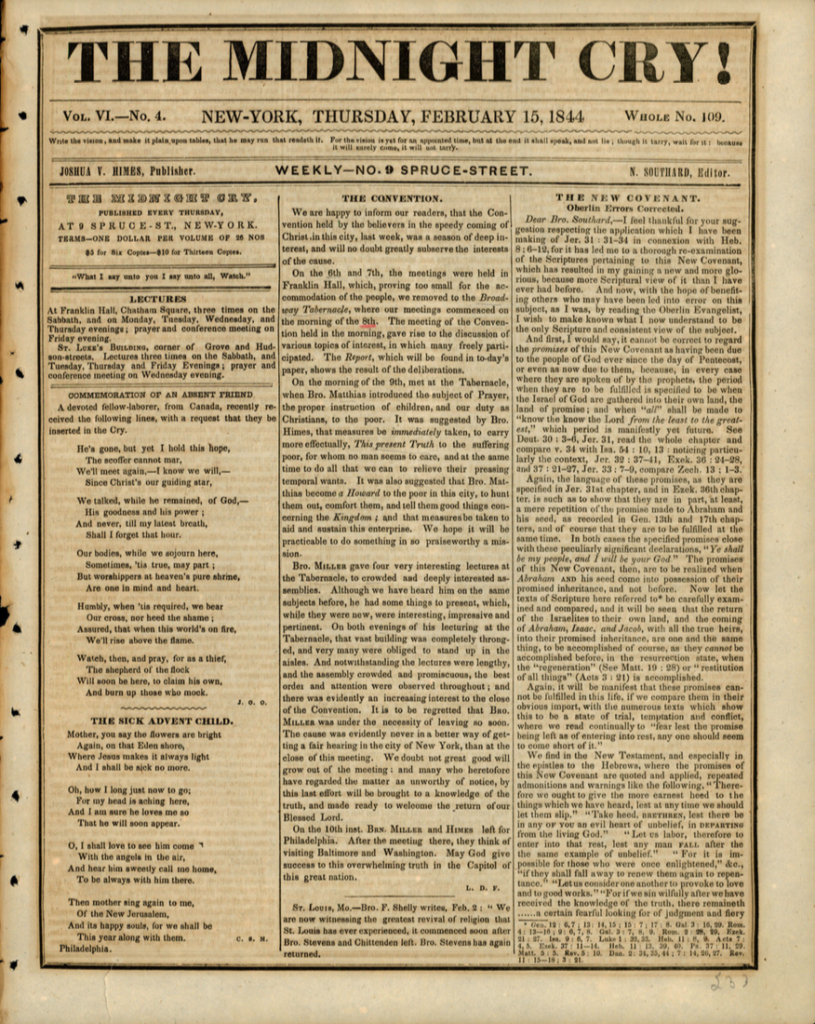
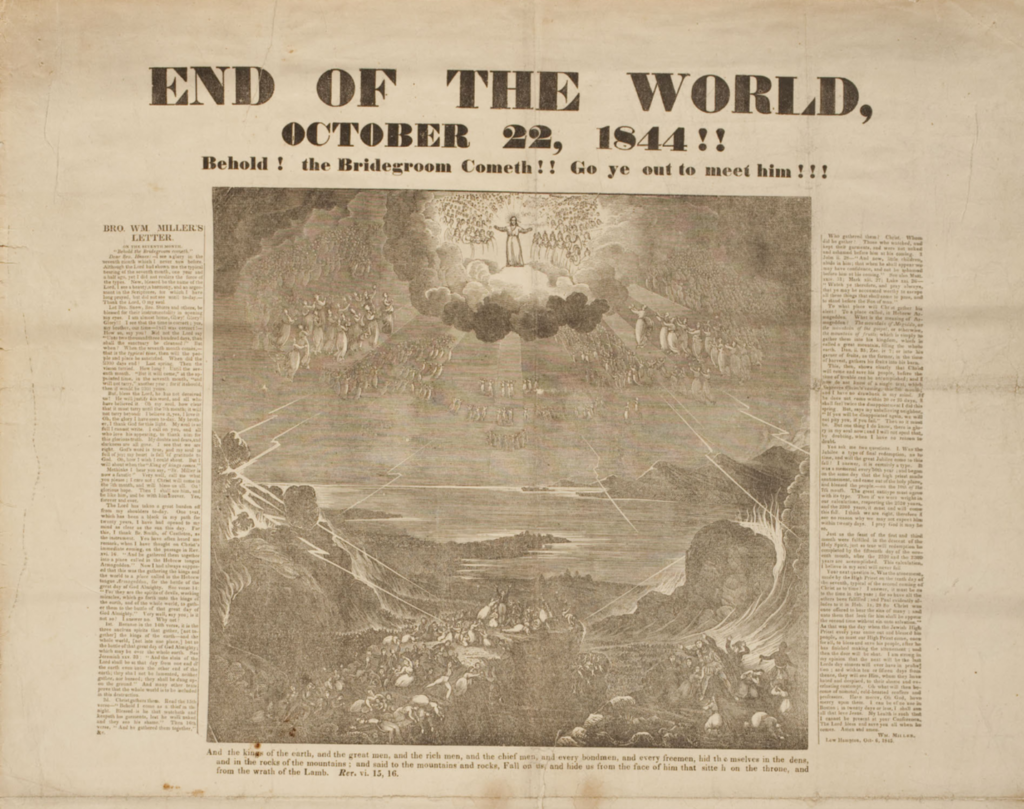
‘The tarrying of the Bridegroom,’ ‘the midnight cry,’ ‘trim your lamps,’ are just a few of the common bywords among many Adventist circles that stemmed out from these very passages. In fact, these are some of the key phrases that symbolized the mighty leading of God as the early Adventists searched the answer for why Christ did not come in 1843 and 1844.
Though discouraged, love for the Savior kept the Advent people searching for light, and God answered their prayers. They were directed to Jesus in the sanctuary above. They realized that on October 22, 1844, Jesus entered into His wedding–not on earth, but in the most holy place in heaven.
This was what the midnight cry really meant!
Through faithful Bible study, prayer, and earnest repentance, a remnant kept their lamps burning, and entered into His wedding by faith.
Their attention was now arrested by the importance of trimming their lamps — of reading God’s word and letting the Holy Spirit do its work of revival and reformation in their personal lives. The vital interpretation of these verses had so much weight that it was the theme of many Advent sermons and published materials.
And it was in hearing one of these sermons preached that the newly-wed Franklin Belden got the inspiration to write the hymn, “Let Every Lamp Be Burning.”
A hymn for our time
Having been raised among a family of strong Advent believers, Belden was not new to this message.
With his strong knowledge and understanding of this core belief, plus a knack for putting words together, and a talent in cultivating melody, it is no surprise that he was able to pen this hymn during the preacher’s homily, ready to be sung as an appeal song right after sermon.
As the hymn goes, it is no surprise that this hymn closely resembles the language and message of ten virgins’ parable:
Let every lamp be burning bright, The darkest hour is nearing;
The darkest hour of earth’s long night, Before the Lord’s appearing.
Though thousands calmly slumber on, The last great message spurning,
We’ll rest our living faith upon His promise of returning.
His word our lamp, His truth our guide, We cannot be mistaken;
Though dangers rise on every side, we shall not be forsaken.
Then let good works with faith appear, to shame the world around us;
Obedience brings the blessings near when faith has firmly bound us.
Refrain: Then trim your lamps, my brethren dear, Then trim your lamps with godly fear;
The Master’s coming draweth near, Let every lamp be burning.
What a beautiful hymn!
But what is the application of this hymn for us today?
Let us now unpack some of these poetic lines and compare how these passages closely resemble the writings of Ellen White regarding this parable.

Let every lamp be burning bright, the darkest hour is nearing…
The darkest hour is usually referred to as the midnight. This symbolizes that Christ will come during the “darkest period of this earth’s history….To God’s people it will be a night of trial, a night of weeping, a night of persecution for the truth’s sake. But out of that night of darkness God’s light will shine.” COL 414.3
The light also represents a message of love to be reflected by God’s faithful people. “The last rays of merciful light, the last message of mercy to be given to the world, is a revelation of His character and love. In their own life and character they are to reveal what the grace of God has done for them.” COL 416.1

Though thousands calmly slumber on…
In the parable, all the virgins were sleeping, but “the wise roused themselves at the message of his approach, and responded to the message, and their spiritual life was replenished…They opened their hearts to receive the Holy Spirit, by which the love of God was she abroad in their hearts…” Signs of the Times, August 13, 1894.

His word our lamp…
The Psalmist writes, “Thy word is a lamp unto my feet, and a light unto my path.” Indeed “it flashes its light ahead, that we may see the path over which we are traveling, and its rays are thrown back on the past, showing the most perfect harmony in that which, to the mind in darkness, appears like error and discord. In that which seems to the worldling an inexplicable mystery, the student of God’s Word sees light and beauty.” Signs of the Times, March 21, 1906.

Then let good works with faith appear…
“Working, waiting watching, and praying — this constitutes genuine Christianity. Our work is not to be all waiting in idle expectancy, neither is it to be all bustle and excitement, to the neglect of personal piety. Working, waiting, watching, and praying are to be blended in the life of God’s minister. He is to be ‘not slothful in business; fervent in spirit; serving the Lord.’ The needs of his soul must be supplied with the oil of grace. Constantly he is to increase in spiritual power.” Review and Herald, January 21, 1902.
What a powerful message in song! Not only is it bourne from Advent experience, but it speaks of a message truly relevant for God’s Sabbath-keeping people in the last days.
And now that we hold the light, the darkest hour is yet to come. How is it burning?
The Bridegroom will soon return from the wedding, and calls for everyone to get ready. Will your light stand the test of persecution and disappointment?
Others without lamps need your light to find the way. Have you taken the time to put oil in your lamp? Is your lamp trimmed and burning?

